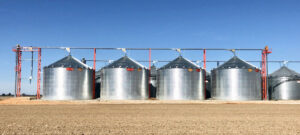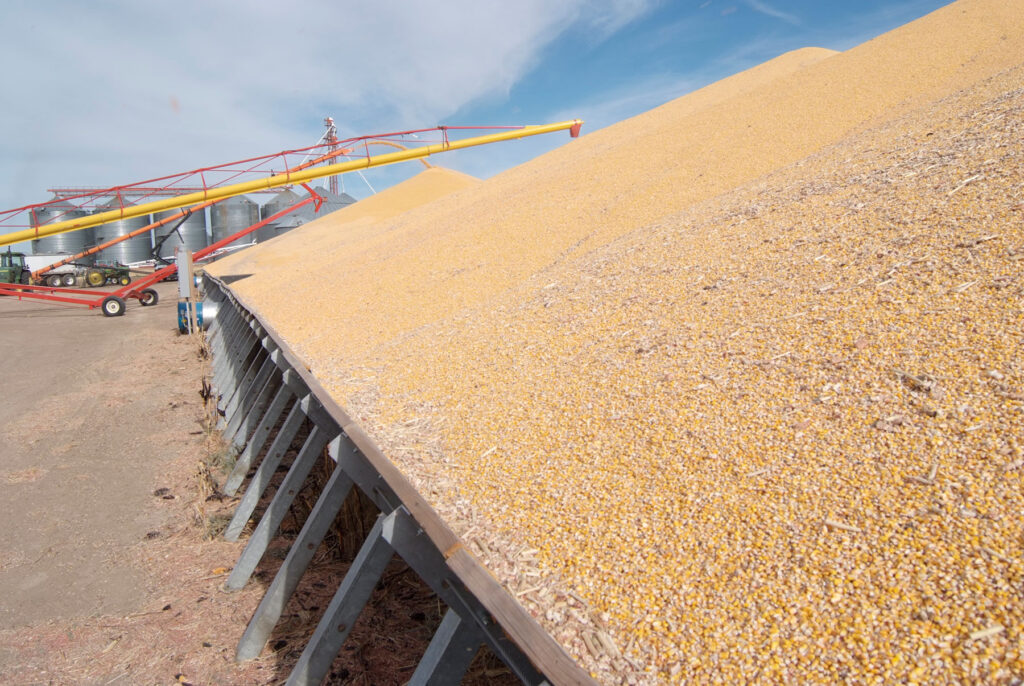Best Practices for Temporary Storage
When harvest comes in faster than your storage capacity, temporary piled grain storage becomes a valuable option. While not ideal for long-term use, proper preparation and management of piled grain can prevent spoilage and quality loss as you wait for your new grain bin to be built. Here are some best practices to ensure your grain stays in optimal condition during this transitional period.
Choose the Right Location
Selecting the proper site for temporary storage is critical. Look for high ground with excellent drainage to avoid moisture buildup. The site should be away from trees or other obstructions to promote airflow and minimize pest risks. You’ll also want a location that is easily accessible for future handling and transfer once your permanent bin is ready.
Use Ground Cover
Ground contact is one of the primary risks for grain spoilage. Placing a sturdy plastic or geotextile tarp between the ground and the grain pile can help minimize moisture absorption. Ensuring that the ground cover is properly anchored will prevent wind from displacing the protective barrier.
Shape and Height of the Grain Pile
The shape of your pile is just as important as its size. A cone-shaped pile helps grain shed water more effectively. Ensure the height of the pile doesn’t exceed your ability to manage the grain and monitor for potential spoilage. Keep the top of the pile as smooth as possible to prevent water from pooling.
Ensure Proper Drainage
Prevent water from pooling around your temporary grain pile by setting up the storage site on well-drained, elevated ground. A ground cover (such as plastic sheeting or a tarp) is essential to keep soil moisture from seeping into the grain from below. Ensure there is no standing water around the base of the pile.
Aeration is Key
Even with temporary piles, airflow is crucial to maintain grain quality. Installing aeration tubes or fans around the pile will help circulate air, reducing the risk of hot spots, moisture buildup, and mold growth. Without adequate aeration, even the best-stored grain can quickly deteriorate.
Cover the Pile to Prevent Moisture Infiltration
A properly secured tarp not only protects the grain from rain but also helps reduce the amount of external moisture getting into the pile. Choose a durable, waterproof tarp, and ensure it’s tightly secured to prevent wind from lifting it and exposing the grain. Check the cover periodically to ensure it’s in good condition and adjust it as needed to prevent leaks.
Monitor Grain Condition
Regular monitoring is essential when using temporary storage. Check the temperature and moisture content of the grain frequently. Hot spots or excessive moisture can lead to mold growth or insect infestations. Tools like grain moisture and temperature sensors, often used in grain bins, can also be implemented to keep an eye on the pile’s condition.
Plan for Proper Handling
While piled grain storage is temporary, having a plan to safely and efficiently move the grain into permanent storage is vital. Be sure you’re equipped with the right handling equipment, such as conveyors or augers, to avoid spillage and grain loss during transfer.
Ready to Upgrade Your Storage?
 Temporary piled grain storage is a practical short-term solution, but nothing beats the efficiency and security of a well-designed grain bin. If you’re searching for “grain bin companies near me,” Valley View Agri-Systems can help plan and provide the perfect-sized grain bin to meet the needs of your operation and is here to support you at every step of your grain storage journey. Reach out to discuss your next grain bin project!
Temporary piled grain storage is a practical short-term solution, but nothing beats the efficiency and security of a well-designed grain bin. If you’re searching for “grain bin companies near me,” Valley View Agri-Systems can help plan and provide the perfect-sized grain bin to meet the needs of your operation and is here to support you at every step of your grain storage journey. Reach out to discuss your next grain bin project!

